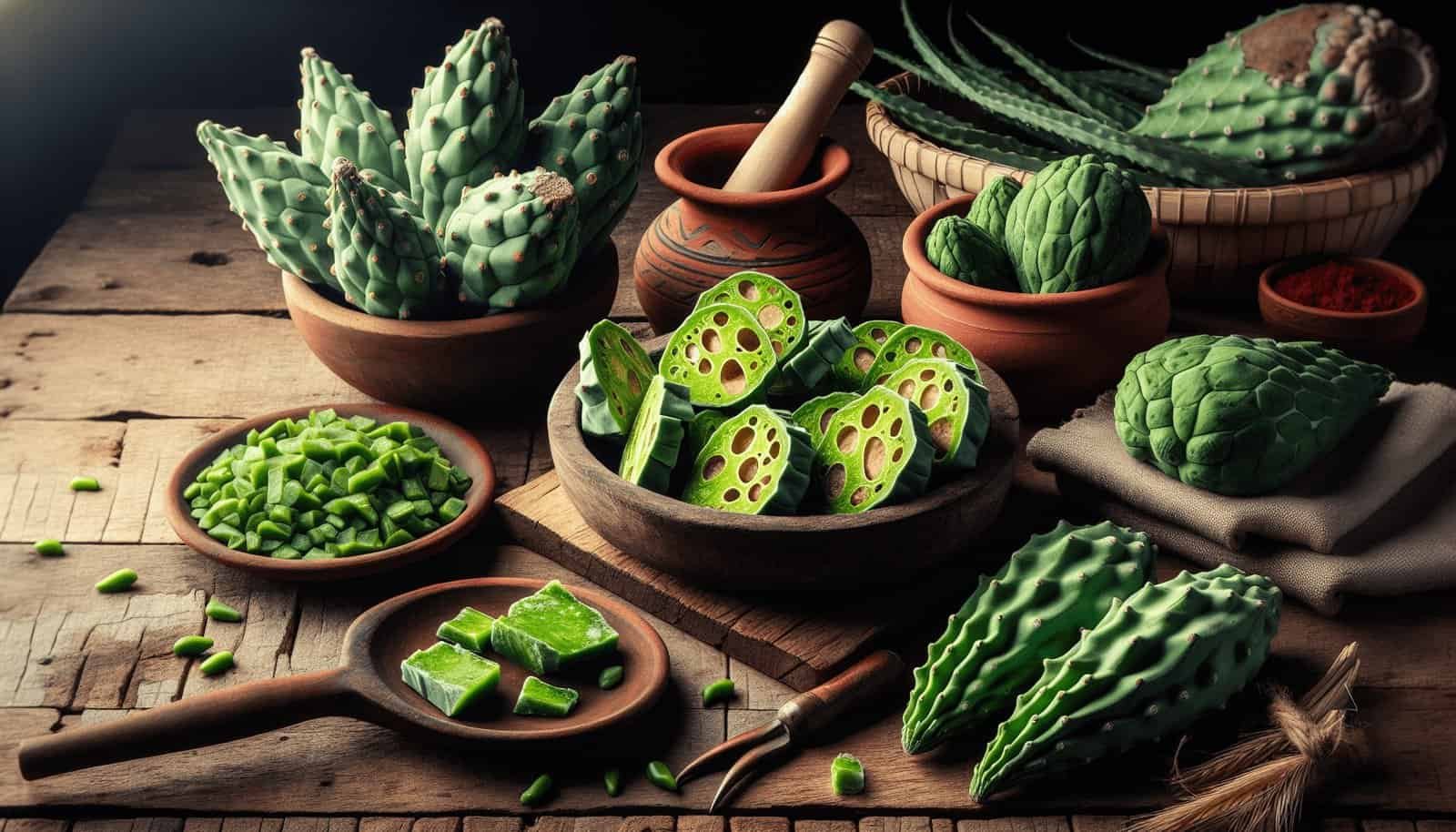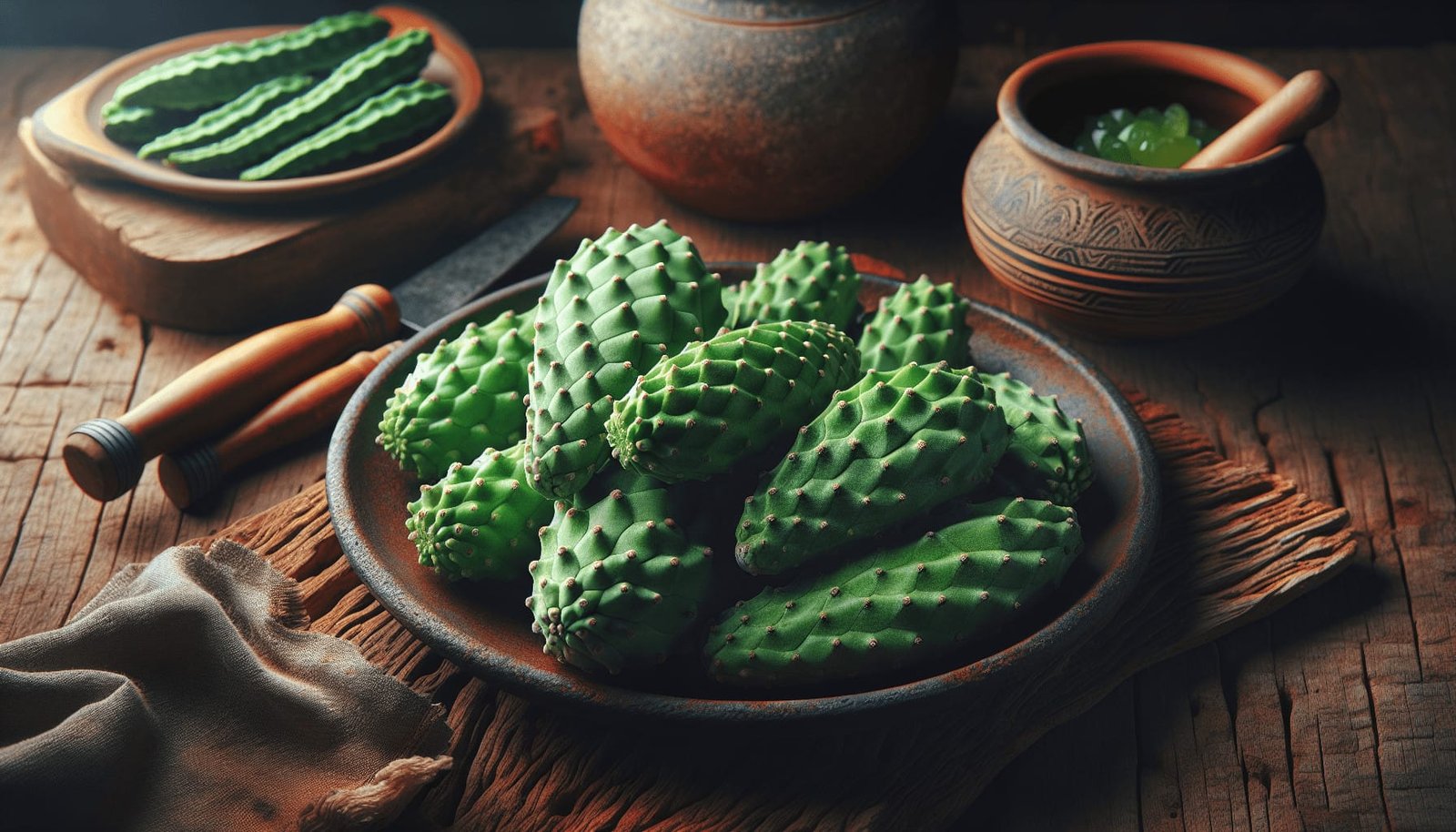Have you ever wondered how you might incorporate the unique flavors of nopal into your meals? This article will take you through some of the traditional ways to prepare nopal, also known as prickly pear cactus, a staple in Mexican cuisine. In understanding how to cook this versatile ingredient, you’ll also learn about its nutritional benefits and cultural significance.
Understanding Nopal
Before diving into cooking methods, it helps to understand what nopal is and why it holds a special place in culinary traditions. Nopal refers to the pads of the Opuntia cactus, which are consumed primarily in Mexico but also in parts of the United States and other cultures.
Nutritional Benefits of Nopal
Nopal is known for its nutritional qualities, offering a variety of health benefits. It is rich in fiber, vitamins A, B complex, C, and minerals like calcium and magnesium. Not only is it low in calories, but it can also help with digestion, normalize blood sugar levels, and reduce inflammation.
Cultural Importance of Nopal
Nopal has been an essential part of the diet in Mexico for centuries. It is used in dishes, beverages, and even traditional medicine. Its presence in the cuisine speaks to a deep cultural heritage, symbolizing endurance and adaptation. It is a significant ingredient that has been passed down through generations, embodying both nutritional importance and cultural tradition.

Preparing Nopal for Cooking
To enjoy the full potential of nopal, you’ll want to know how to prepare it properly. Though the cactus is more commonly associated with desert landscapes, the edible pads are not only available fresh at certain markets but also canned or jarred.
Cleaning Nopal
When working with fresh nopal, the first step is to clean the pads. Use a sharp knife to carefully scrape off the spines and bumps. It’s crucial to remove all the thorns, as they can be quite sharp. Once cleaned, rinse the pads thoroughly to remove any remnants.
Slicing Nopal
After cleaning, the nopal pads need to be sliced. Generally, they are cut into thin strips or small squares. The shape can vary depending on the dish you plan to prepare. Slicing them allows nopal to cook evenly and blend well with other ingredients.

Traditional Cooking Methods
Let’s explore some of the traditional methods used to cook nopal, highlighting both its versatility and unique flavors.
Grilling Nopal
Grilling is a popular choice for cooking nopal, bringing out a smoky taste that pairs beautifully with its natural flavors. To grill, you can lightly coat the sliced nopal with oil and season with salt. Place it on a grill until it becomes tender with charred marks.
Recipe: Grilled Nopal Tacos
One excellent way to enjoy grilled nopal is by incorporating it into tacos. Grill the nopal, chop it into small pieces, and serve it in corn tortillas with other toppings like cilantro, onion, and salsa.
Sautéing Nopal
Sautéing nopal is another simple technique that enhances its earthy, slightly tangy flavor. You can sauté it in a pan with onions, garlic, and a touch of olive oil. This method is quick, retaining both texture and flavor.
Recipe: Nopalitos with Eggs
A classic breakfast dish is Nopalitos con Huevos, or Nopal with Eggs. Simply sauté the nopal and mix it with scrambled eggs for a nutritious morning meal. Add cheese and roasted peppers for an extra touch.
Boiling Nopal
Boiling nopal helps soften its texture while mellowing its tartness. It’s often used in soups and stews. After boiling, nopal can be added to a variety of recipes.
Recipe: Nopal Soup
To make a traditional Nopal soup, boil sliced nopal with tomatoes, onions, and chilies. Season with salt and pepper to taste. This soup is nourishing and comforting, especially in cooler weather.
Pickling Nopal
Pickling offers a method to preserve nopal and infuse it with additional flavors. Common spices used include garlic, dill, and oregano. Pickled nopal can be enjoyed as a side dish or topping.
Recipe: Pickled Nopal
For a tangy addition to your meals, prepare pickled nopal by soaking it in a mixture of vinegar, water, salt, and spices. Let it sit for at least 24 hours to absorb flavors before serving.

Combining Nopal with Other Ingredients
Pairing nopal with other foods can enhance its taste and elevate any dish. Here’s how you can integrate nopal into more complex recipes.
Nopal and Meat Dishes
Nopal pairs well with meat, particularly chicken and beef. The acidity of nopal complements the richness of the meat, providing a balanced dish. Consider using nopal as a base for fajitas, mixing it with strips of steak or chicken.
Salads and Nopal
Nopal adds a crunchy, fresh element to salads. Combine sliced nopal with lettuce, avocado, cherry tomatoes, and lime juice for a refreshing salad that’s perfect for a light meal or side dish.
Recipe: Nopal Salad
To make a simple Nopal Salad, mix boiled or grilled nopal with diced tomatoes, onions, serrano peppers, and cilantro. Dress it with lime juice, salt, and pepper for a zesty taste.

Preservation and Storage of Nopal
Knowing how to store nopal helps maintain its freshness and maximize its usage in your kitchen.
Storing Fresh Nopal
If you purchase fresh nopal, it’s best stored in the refrigerator. Wrap them in a damp paper towel and place them in a plastic bag to keep them fresh for about a week.
Storage of Cooked Nopal
Cooked nopal should be stored in an airtight container if not consumed immediately. Refrigerate cooked nopal for up to three days. It can be frozen if you want to extend its shelf life, but be aware that its texture might change upon thawing.
Canning and Drying Nopal
Canned or jarred nopal is an alternative that preserves the vegetable for longer periods. Drying is another method, where thin slices are dehydrated, offering a different texture to nopal dishes.

Conclusion
Incorporating nopal into your cooking not only broadens your culinary skills but also connects you with a longstanding culinary tradition. Whether grilled, sautéed, boiled, or pickled, nopal’s versatility and nutritional value make it a rewarding ingredient to experiment with. By exploring these traditional methods, you can enjoy the authentic flavors and rich heritage of this remarkable cactus pad. Enjoy the process, savor the taste, and discover how cooking nopal can add a deliciously healthy twist to your meals.

